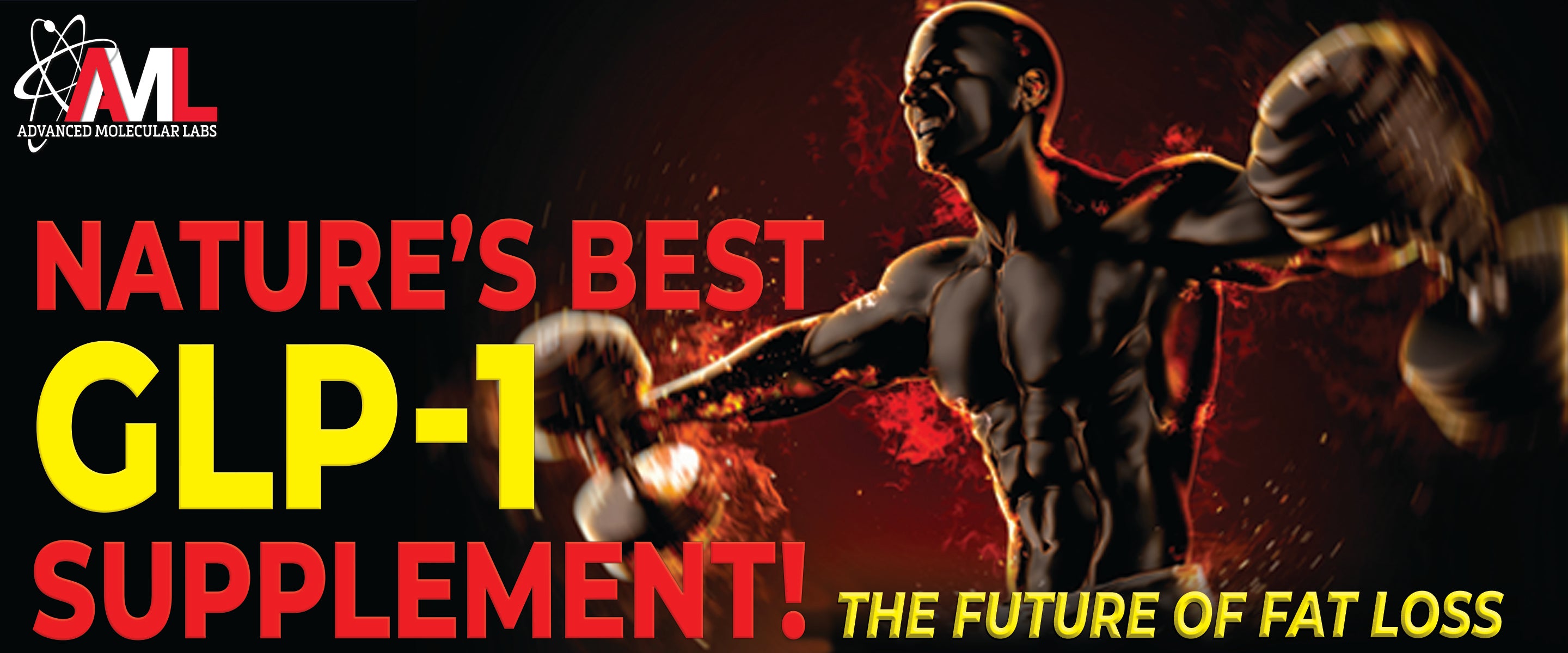


Top 3 Post-workout Nutrients | Leucine, Creatine, Betaine
Strength training promotes muscle growth and strength, but not without first driving the body into a catabolic state that breaks down specific muscle tissue components, such as glycogen and protein, to supply the energy required for muscular function during exercise. Naturally, the diminished protein and glycogen levels within the muscle cell must be replenished to prevent the potential loss of lean body mass and diminished exercise performance. The post-workout consumption of lean protein and complex carbohydrates is an important part of the replenishing process augmenting muscle growth and performance. In addition, post-workout consumption of leucine, creatine and betaine have also been shown to potently replenish the muscle cell, enhancing muscle growth and function.
Leucine Stimulates Post-workout Anabolism
The consumption of leucine is one of the more effective ways to reverse exercise-induced protein degradation in muscle. Leucine intake has been shown to directly stimulate muscle protein synthesis and inhibit muscle protein breakdown, ultimately promoting muscle growth by activating the nutrient-sensing molecule mTOR. In fact, the muscle-building effect of leucine consumption has been shown in several studies to be most potent after resistance training.
A study by Walker et al.1 showed that leucine consumption immediately after working out increased mTOR activity for many hours post-workout, leading to greater muscle protein synthesis, compared to a second group that did not take leucine after the workout. A second investigation by Pasiakos et al.2 demonstrated that consumption of leucine immediately after exercise increased muscle protein synthesis by as much as 33 percent.
Leucine consumption has also been shown to decrease the breakdown of muscle protein following exercise, once again by activating mTOR. The activation of mTOR from leucine intake results in the inactivation of the energy-sensing molecule AMPK.3,4 Since AMPK normally stimulates the conversion of protein into amino acids for energy during periods of low energy, such as exercise, to restore the energy status of the muscle cell, leucine’s ability to inactivate AMPK prevents AMPK-driven degradation of muscle protein. AMPK also promotes the breakdown of muscle glycogen into glucose, meaning leucine consumption can also restore muscle glycogen levels, especially after exercise.5
Creatine Monohydrate Boosts Muscle Energy, Size and Strength
Creatine monohydrate is one of the most well characterized muscle-building supplements on the market. Numerous studies over the years have shown the positive influence of creatine monohydrate supplementation on high-intensity exercise performance. This body of evidence clearly indicates that creatine supplementation can increase power output during intense exercise, while also stimulating muscle hypertrophy.6 The unique capacity of creatine to boost size and power stems, in part, from creatine’s ability to function as a primary energy storage molecule that rapidly reverses the depletion of muscle cell energy (ATP) during muscular contraction. The maintenance of energy levels in the muscle cell prolongs the capacity for muscular contraction, promoting superior exercise performance and greater muscle growth.7 Creatine also drives muscle growth by triggering many different cellular mechanisms, including the stimulation of muscle cell formation8 and increased muscle protein synthesis.9
Combining Leucine With Creatine Monohydrate Limits Myostatin Function
The muscle-depleting molecule myostatin vigorously thwarts muscle growth by blocking several key anabolic processes, such as the formation of new muscle fibers10 and mTOR-driven muscle protein synthesis.11 Because of the extraordinary capacity of myostatin to keep muscle growth in check, the slightest reduction in myostatin activity will generate notable gains in muscle growth.
While many reports in the scientific literature clearly show the independent muscle-building effects of leucine and creatine monohydrate, the combined use of both compounds has only recently been shown to reduce the negative influence of myostatin on muscle growth. A study by Mobley et al.12 showed that a mixture containing leucine and creatine monohydrate reversed myostatin-induced atrophy in isolated muscle cells by preventing the inhibition of newly formed muscle fibers, and therefore muscle growth.
Pump Up With Betaine
Betaine, also known as trimethylglycine, is a natural osmolyte found in the cell that protects the cell against dehydration by increasing cellular water retention through osmosis. The ability of betaine to maintain hydration reduces the negative impact that dehydration can have on exercise performance, such as increased heart rate, increased rate of glycogen degradation and increased lactate levels.
Furthermore, the ability of betaine to function as an osmolyte conceivably enhances muscle hypertrophy by causing the muscle fiber to swell. In fact, research has shown that muscle cell swelling stimulates protein synthesis and decreases protein breakdown, resulting in muscle growth.13,14 Although the underlying mechanisms are unclear, it has been suggested that cell swelling is perceived as a threat to cellular integrity. This perceived threat triggers certain cellular-signaling cascades to reinforce structural components of the muscle cell, by promoting the synthesis of certain structural proteins within the cell, resulting in increased muscle size.15
Betaine Synergistically Enhances Creatine Function for Greater Strength
Some of betaine’s muscle-building effects likely come from its capacity to donate a methyl group, which simply consists of one carbon atom and three hydrogen atoms, in certain biosynthetic reactions resulting in the increased production of creatine.
Furthermore, betaine’s ability to function as a methyl donor also increases the uptake of creatine into the muscle cell by stimulating the conversion of homocysteine into methionine, which effectively lowers homocysteine levels. Since higher homocysteine levels have been shown to impair insulin signaling16, lower homocysteine levels caused by betaine should improve insulin sensitivity, and therefore the insulin-driven uptake of creatine into the muscle cell. Altogether, the ability of betaine to increase creatine production and muscle cell uptake is likely the primary reason why betaine has been shown to significantly increase anaerobic power in key lifts like the bench press and squat.17
In summary, the essential replenishment of muscle protein and glycogen levels from the post-workout consumption of leucine, combined with the synergistic muscle-building compounds creatine and betaine, will provide a robust biochemical milieu within the muscle cell— driving exceptional growth and strength. Leucine, creatine and BetaPower™ Betaine are found in Advanced Molecular Labs’ (AML) Postworkout.
References:
1. Walker DK, Dickinson JM, et al. Exercise, amino acids, and aging in the control of human muscle protein synthesis. Med Sci Sports Exerc 2011;43, 2249-2258.
2. Pasiakos SM, McClung HL, et al. Leucine-enriched essential amino acid supplementation during moderate steady state exercise enhances post-exercise muscle protein synthesis. Am J Clin Nutr 2011;94, 809-818.
3. Manders RJ, Koopman R, et al. The muscle protein synthetic response to carbohydrate and protein ingestion is not impaired in men with longstanding type 2 diabetes. J Nutr 2008;138, 1079-1085.
4. Sandri M. Signaling in muscle atrophy and hypertrophy. Physiology (Bethesda) 2008;23, 160-170.
5. Morifuji M, Koga J, et al. Branched-chain amino acid-containing dipeptides, identified from whey protein hydrolysates, stimulate glucose uptake rate in L6 myotubes and isolated skeletal muscles. J Nutr Sci Vitaminol (Tokyo) 2009;55, 81-86.
6. Harris RC, Soderlund K and Hultman E. Elevation of creatine in resting and exercised muscle of normal subjects by creatine supplementation. Clin Sci (Lond) 1992;83, 367-374.
7. Bemben MG and Lamont HS. Creatine supplementation and exercise performance: recent findings. Sports Med 2005;35, 107-125.
8. Willoughby DS and Rosene JM. Effects of oral creatine and resistance training on myogenic regulatory factor expression. Med Sci Sports Exerc 2003;35, 923-929.
9. Willoughby DS and Rosene J. Effects of oral creatine and resistance training on myosin heavy chain expression. Med Sci Sports Exerc 2001;33, 1674-1681.
10. Allen DL, Hittel DS and McPherron AC. Expression and function of myostatin in obesity, diabetes, and exercise adaptation. Med Sci Sports Exerc 1997;43, 1828-1835.
11. Amirouche A, Durieux AC, et al. Downregulation of Akt/mammalian target of rapamycin signaling pathway in response to myostatin overexpression in skeletal muscle. Endocrinology 2009;150, 286-294.
12. Mobley CB, Fox CD, et al. L-leucine, beta-hydroxy-beta-methylbutyric acid (HMB) and creatine monohydrate prevent myostatin-induced Akirin-1/Mighty mRNA down-regulation and myotube atrophy. J Int Soc Sports Nutr 2014;11, 38.
13. Grant AC, Gow IF, et al. Regulation of protein synthesis in lactating rat mammary tissue by cell volume. Biochim Biophys Acta 2000;1475, 39-46.
14. Millar ID, Lomax MA and Shennan DB. Mammary tissue protein synthesis is regulated by cell volume. Biochem Soc Trans 1996;24, 335S.
15. Lang F. Mechanisms and significance of cell volume regulation. J Am Coll Nutr 2007;26, 613S-623S.
16. Sanchez-Margalet V, Valle M, et al. Elevated plasma total homocysteine levels in hyperinsulinemic obese subjects. J Nutr Biochem 2002;13, 75-79.
17. Hoffman JR, Ratamess NA, et al. Effect of 15 days of betaine ingestion on concentric and eccentric force outputs during isokinetic exercise. J Strength Cond Res 2011;25, 2235-2241.




